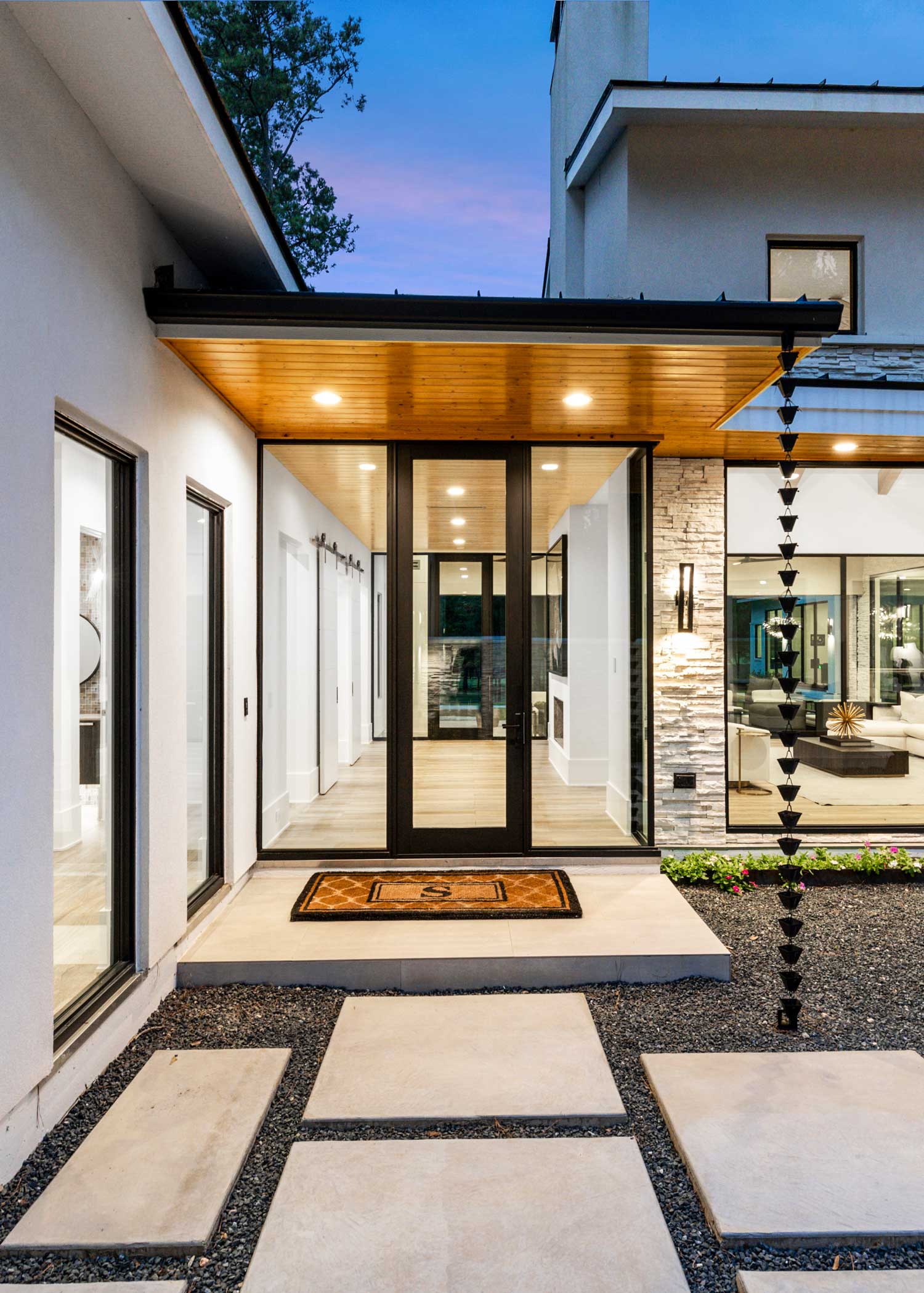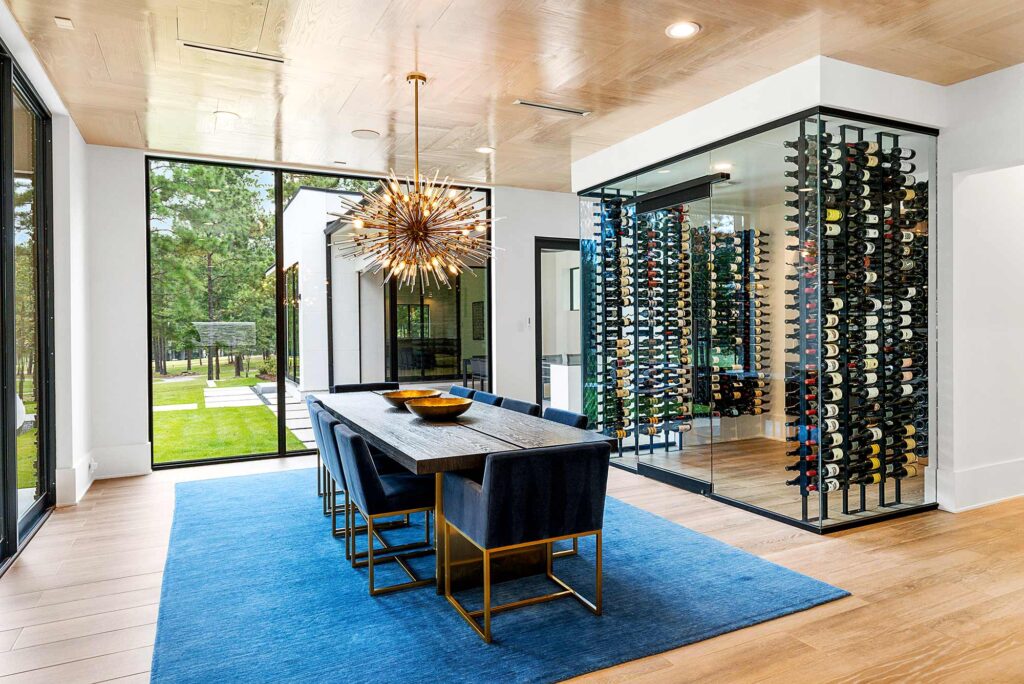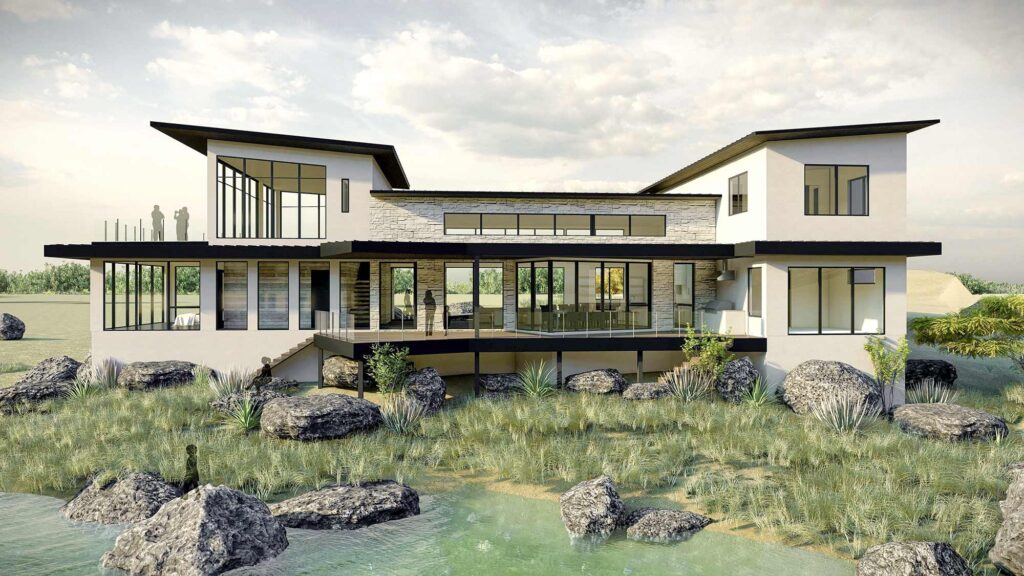
What is Modern home design? It represents the embodiment of contemporary living, seamlessly blending functionality, aesthetics, and sustainability. It has become increasingly popular due to its emphasis on open spaces, clean lines, and innovative technologies. In this article, we will provide the 10 essential modern home designs, providing you with insights and inspiration to create your own modern haven. We encourage you to explore our Portfolio with one-of-a-kind modern luxury designs.
seamlessly blending functionality, aesthetics, and sustainability
Functionality and Practicality
Efficient Use of Space
One of the key aspects of modern home design is the efficient utilization of space. Every square foot is carefully considered and optimized to serve a purpose. Clever storage solutions, such as built-in cabinets and hidden compartments, help minimize clutter and maximize available space.
Smart Home Technology Integration
The integration of smart home technology enhances the functionality of modern homes. From automated lighting and climate control systems to voice-activated assistants and security features, smart home technology makes daily life more convenient and efficient.
Open Floor Plans
Removal of Walls and Barriers
Modern home design embraces open floor plans by removing unnecessary walls and barriers. This allows for a seamless flow between different living spaces; Our Bluejack Retreat creates a sense of unity and connectivity throughout the home. Open floor plans also facilitate better social interaction and make smaller spaces feel more spacious.
Seamless Flow Between Living Spaces
In a modern home, the transition between living areas is fluid and uninterrupted. The kitchen, dining room, and living room are often interconnected, allowing for easy movement and interaction between family members and guests. This design approach promotes a sense of togetherness and a more sociable atmosphere.

Minimalist Aesthetics
Clean Lines and Simplicity
Minimalism is a hallmark of modern home design. Clean lines, simple shapes, and uncluttered spaces create a sense of calm and order. Furniture and decor are often sleek and streamlined, with an emphasis on functionality and purpose. The minimalist approach promotes visual clarity and allows key design elements to stand out.
Neutral Color Palettes
Neutral color palettes are commonly used in modern home design to create a sense of harmony and serenity. Shades of white, beige, gray, and taupe dominate the color scheme, providing a versatile backdrop for other design elements. Accents of bolder colors may be introduced sparingly to add visual interest and contrast.
Sustainable and Eco-Friendly Features
Use of Sustainable Materials
Sustainability is a core principle of modern home design. Natural and recycled materials, such as bamboo flooring, reclaimed wood, and recycled glass countertops, are popular choices. These materials not only reduce environmental impact but also add warmth and texture to the overall design.
Incorporation of Natural Lighting and Ventilation
To minimize reliance on artificial lighting and mechanical ventilation, modern home design incorporates ample natural lighting and ventilation. Strategically placed windows, skylights, and light wells allow for the entry of natural light, reducing the need for artificial lighting during the day. Properly positioned windows and ventilation systems promote cross ventilation and fresh air circulation.
Innovative Materials and Technology
Integration of Modern Materials like Glass, Concrete, and Steel
Modern home design embraces the use of innovative materials to create a contemporary aesthetic. Glass, concrete, and steel are frequently utilized to achieve a sleek and industrial look. Glass walls and large windows offer transparency and an open feel, while concrete and steel provide durability and a sense of modernity.
Use of Advanced Building Techniques
Modern home design often incorporates advanced building techniques and construction methods. Prefabricated elements, modular construction, and sustainable building practices streamline the construction process and minimize waste. These techniques contribute to a faster, more efficient, and environmentally conscious approach to building.
Connection to the Outdoors
Patios, Decks, and Balconies
Outdoor areas such as patios, decks, and balconies provide additional living spaces that extend the functionality of a modern home. These outdoor zones can be designed with comfortable seating, outdoor kitchens, fire pits, or even swimming pools, creating a retreat-like atmosphere for the homeowners and their guests.
Landscaping and Garden Design
To enhance the connection with nature, modern home design integrates thoughtful landscaping and garden design. Lush greenery, carefully chosen plants, and well-designed outdoor lighting transform the surroundings into a tranquil oasis. Incorporating elements like water features, natural stone pathways, and pergolas can further enrich the outdoor experience.
Integration of Nature
Use of Natural Elements like Plants, Water Features, and Natural Textures
Bringing nature indoors is an essential element of modern home design. Incorporating natural elements such as indoor plants, living walls, or vertical gardens adds a refreshing touch to the interior. Water features like indoor fountains or aquariums can create a soothing ambiance. Natural textures, such as exposed brick walls, stone accents, or wooden finishes, contribute to a sense of warmth and organic beauty. A prime example is our exquisite Lake Buchanan Modern design.
Indoor Gardens and Living Walls
Modern homes often feature indoor gardens or living walls, allowing homeowners to enjoy the benefits of nature year-round. These green installations not only enhance air quality but also provide a visually striking focal point. Vertical gardens can be incorporated into various areas of the home, from the living room to the kitchen or even the bathroom, adding a vibrant and eco-friendly touch.

Emphasis on Comfort and Well-being
Ergonomic Furniture and Layouts
Modern home design prioritizes comfort and ergonomics in furniture selection and room layouts. Well-designed seating, such as ergonomic chairs or sofas, ensures proper support and posture. Thoughtful consideration is given to the arrangement of furniture to optimize traffic flow and create functional and inviting spaces.
Incorporation of Relaxation Spaces
Modern homes often feature dedicated relaxation spaces, such as meditation rooms, home spas, or cozy reading nooks. These areas provide a retreat from the hustle and bustle of daily life, promoting relaxation and well-being. Soft lighting, comfortable seating, and soothing decor elements contribute to creating a tranquil atmosphere.
Personalization and Customization
Tailoring the Design to Meet Individual Needs and Preferences
Modern home design allows for personalization and customization to reflect the homeowner’s lifestyle and taste. Design elements can be tailored to accommodate specific needs, whether it’s a home office, a dedicated hobby room, or a play area for children. Customization ensures that the home is a true reflection of the homeowner’s personality and preferences.
Unique Architectural Features and Personalized Touches
Modern homes often incorporate unique architectural features and personalized touches to create a distinctive character. This may include statement pieces like a dramatic staircase, an accent wall with artistic finishes, or a custom-built fireplace. These elements add visual interest and create a sense of individuality within the home.
Conclusion
In conclusion, modern home design encompasses a range of essential elements that combine functionality, aesthetics, and sustainability. From efficient use of space and open floor plans to minimalist aesthetics and integration of nature, each element contributes to creating a harmonious and contemporary living environment. Balancing functionality, aesthetics, and sustainability is key to achieving a modern home that meets the needs and desires of its occupants.


